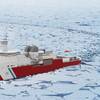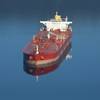BP Whiting Refinery Cleanup Winds Down
No further cleanup actions recommended following survey of rocky cove near BP Whiting Refinery
An assessment team, comprised of representatives from the Coast Guard, Environmental Protection Agency and BP, stated Friday that no further cleanup actions were recommended following a scheduled return visit to the BP Whiting Refinery to conduct a Determination of Clean survey.
The visit was originally scheduled to take place Thursday but was postponed due to heavy rains and high water levels.
After an inspection of the rocky shoreline on the southeast wall of the cove near the refinery, it was determined that the small areas of the oiled pebbles identified Sunday had all been removed by cleanup crews.
On Sunday, the assessment team also conducted underwater surveys that included probing in 36 different locations on the bottom of Lake Michigan near the area of discharge. The team did not find any indication of oil on the bottom of the lake.
As a result of the absence of sheen and oil from the water for several days, all of the boom was removed from the water Sunday with the exception of the small area surrounding the outfall of the water treatment facility of the refinery, site of the discharge. That section of boom will remain in place until it is confirmed that no oil is in the refinery’s cooling system.
The Coast Guard was first notified of, and responded to, the oil discharge March 24 and has remained engaged continually during the response.
“We take our job and responsibility of protecting the environment very seriously,” said Capt. Matt Sibley, captain of the port and federal on-scene coordinator for the response. “Any amount of oil or other pollutants in the water concerns me deeply.”
Sibley is also the commander of Coast Guard Sector Lake Michigan and oversees pollution response on Lake Michigan.
“I want to assure everyone, particularly the general public, that the Coast Guard will continue to work very closely with BP and all agencies involved during these final stages."
In addition to the Coast Guard and EPA, other agencies involved during various stages of the response include: the Indiana Department of Environmental Management; the National Oceanic and Atmospheric Administration, which conducted trajectory analyses in the water following the discharge; and U.S. Fish and Wildlife, which helped to evaluate potential impacts to wildlife and their habitat.
uscgnews.com











